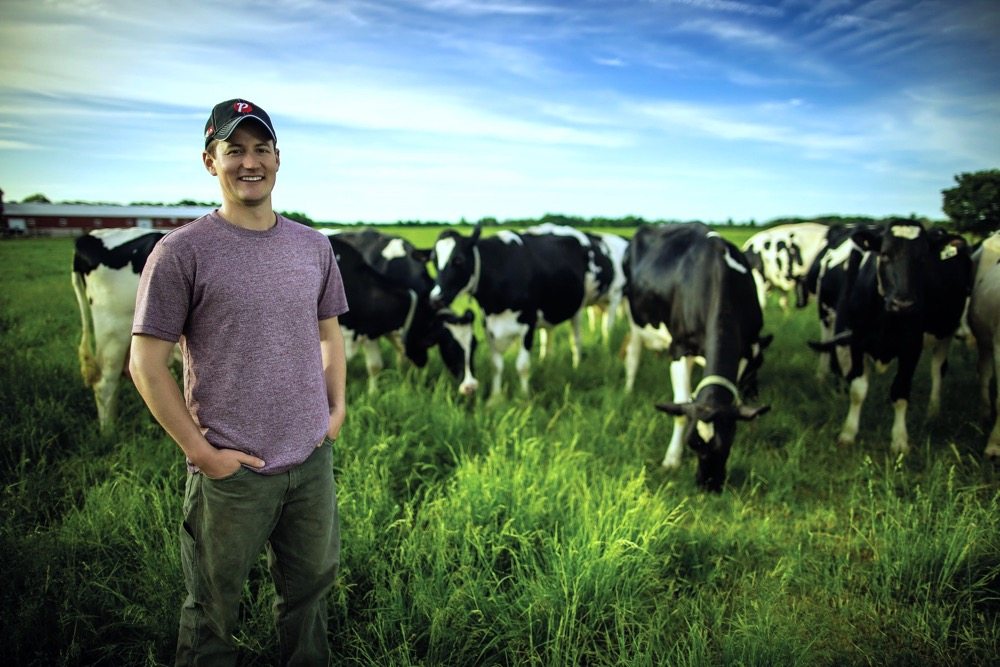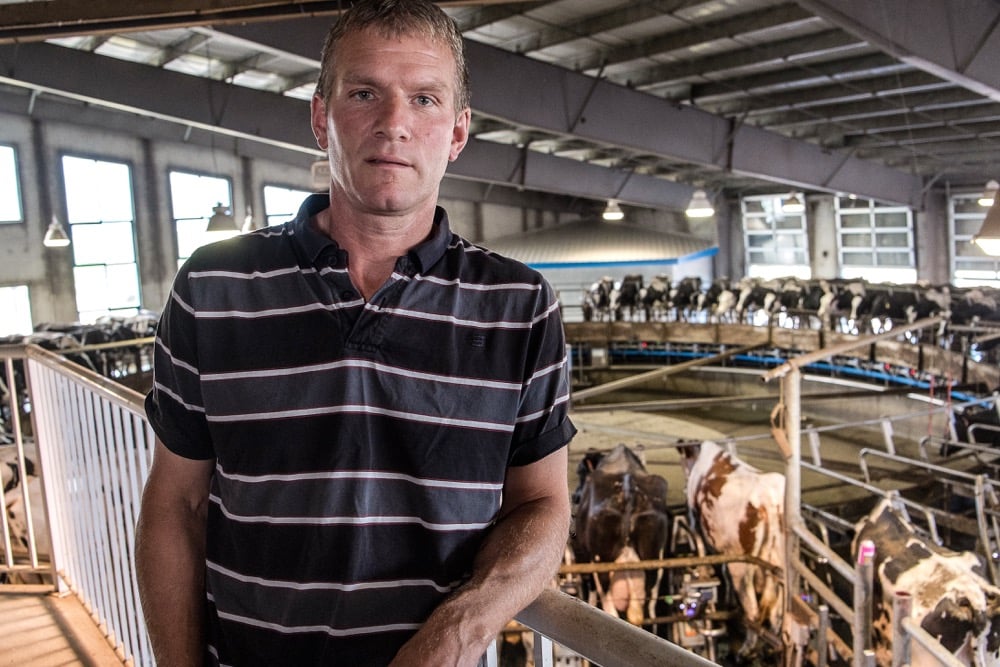A tsunami seems set to wash over Canadian agriculture. No, the seas haven’t suddenly shifted inland. This dangerous wave is made up of public sentiment about the way you conduct your business.
Just like a tsunami, you might not like it, you probably won’t welcome it, but trying to resist it is going to be futile.
Anyone who wants evidence of what’s coming only has to take a look at our neighbours to the south. Over the past few years, the U.S. food industry has found itself under the microscope like never before.
Read Also

Building a farm legacy that outlasts you
A farm’s legacy isn’t just about the land; it’s also about the values and the impact that continue long after the current owner has stepped away.
From a push for GMO labelling to calls for the end to “factory-farmed” livestock, the old way of doing business is under siege.
Suddenly, bestselling books are deconstructing meals. Entire television channels stoke a “foodie” culture. And New York Times opinion makers are writing about the evils of antibiotic abuse in large-scale livestock operations.
Plus, of course, there are those hidden-camera videos that go viral from inside livestock facilities, highlighting alleged abuse.
Canada isn’t there yet. So far nobody’s using their bully pulpit in the Globe and Mail to regularly beat up farmers — but there is a growing list of American farmers who are more than ready to tell us, based on their experience, that we’d be fools to think we aren’t on the same path.
A&W is suddenly promising their customers hormone-free beef in their burgers. The Canadian egg industry is rapidly moving toward an enriched housing model, spurred on by their customers in the fast-food sector who don’t want to be accused of bundling animal cruelty up into that breakfast sandwich. Plus, P.E.I. residents are watching pesticide applications on the island like a hawk. Some of the first “undercover” animal videos have hit the airwaves. The list goes on.
Can Canada’s farmers do anything about this? Should they even try? To answer those questions, Country Guide recently spoke to Americans on both sides of the chasm about why they feel the way they do, whether common ground is possible and what the future might hold.
Good neighbour
On paper, George Zittel should be farming in the middle of a war zone.
Zittel is a fifth-generation farmer mainly growing vegetables both in the field and in greenhouses, and he’s one of about 300 farm families in a 25-square-mile chunk of upstate New York that’s traditionally been an agriculture centre. That number includes a significant contingent of dairy farmers, so it sounds like a picture-perfect American idyll.
Except these days, Eden, N.Y. has become a bedroom community populated by about 8,000 urbanites who work in the city of Buffalo, just 20 minutes down the road.
It definitely sets the stage for a life full of conflict. But an unexpected thing has happened. Zittel and other farmers embraced the growth of their local town. They got active in everything from the local volunteer fire department to the chamber of commerce, and they got elected to the town board.
They were determined to fly the agriculture flag.
Zittel says by doing so, he and other producers in the area have managed to prevent the emergence of an us-versus-them mentality on either side. And while he freely admits it’s far from perfect, he insists that by doing so, he’s become not “that farmer down the road” to his neighbours, but instead is a real person named George, someone they pick the phone up and call if they’ve got an issue or concern.
In an era of heightened activist interest in food and farming, that relationship may even eventually serve as their first line of defence if outsiders decide to try to stir up trouble, he says.
“I really do think that if someone from outside began to attack us, they would defend us,” Zittel says of his neighbours. “As a town board, we’ve done a lot of work, everything from surveys to setting up an agricultural board, and we know they like having farming around, they like to see it, they like that connection to it, even if it’s just driving by the fields and seeing the crops.”
Zittel says there are two key elements to the defence of farming in this challenging environment. One is a potent right-to-farm law, that clearly delineates just what farmers can and cannot do. In the case of New York state, those limitations are very clear-cut, Zittel says.
“There are two things it has the power to stop — if there’s a health issue or a safety issue,” Zittel says. “If it’s just a bit of dust or noise, or the inconvenience of slow-moving equipment, they legally can’t stop us.”
That’s the stick the local agriculture industry holds, but Zittel cautions the industry won’t get far just swatting people with it. After all, it only exists because politicians — and by extension voters — have granted it. Elections still happen, politicians can get fired by voters, and if agriculture plays it too cute, it could find itself losing its most potent defence. This is where the carrot comes in, Zittel says. It’s in actually listening to complainants, rather than simply dismissing their concerns.
The farm strategy was to build bridges. “We set up an agriculture committee for the town, and when there’s a problem, it’s their job to go out, talk to the people involved, and try to resolve the issue,” Zittel says. “The people on this board are farmers themselves, but it’s important that they take these concerns seriously. We can’t just give them lip service.”
Frequently the issues aren’t all that challenging, and the solution actually comes from a bit of dialogue between both parties. A neighbour might not object to manure spreading from a dairy operation, for example, but just not want it to happen right before the big picnic they’re planning on Sunday afternoon.
When solutions aren’t possible, the issue goes before the town council, and this is where the right-to-farm law comes in. But that’s a last resort.
“We encourage our neighbours to communicate with us, to tell us about things like a picnic they have planned,” Zittel says.
The activist
For many in the agriculture industry, Matt Rice could be a poster boy for all their objections about animal activists.
He’s director of investigations for Mercy For Animals, the activist group perhaps best known for going undercover at animal agriculture operations to shoot hidden-camera footage of animal abuse.
Rice is an urbanite who lives and works in Los Angeles, with an office on the famed Santa Monica Boulevard in Hollywood. He and the organization he works for aren’t shy about harnessing the star power of nearby Hollywood to push their viewpoint. He’s even a vegan.
What he doesn’t have are horns and a tail, and anyone who’s expecting a scatterbrained hippie is going to be sorely disappointed. He’s also a U.S. Marine Corps veteran, and he marshals both passion and logic when the topic of animal agriculture comes up, saying it would be a mistake to simply brush him and others like him off as irrational radicals, especially since most of them used to be customers of the industry.
“The truth of the matter is that most of us used to eat meat and eggs, and enjoy them,” Rice told Country Guide during a recent conversation. “It was only after we encountered information about how they were being raised that most of us made the conscious decision not to consume them, because we didn’t feel we could morally support how it was being done.”
There’s little doubt Rice and others like him aren’t popular in the agriculture industry, garnering everything from straight-up criticism for presenting brief seconds-long video snippets out of context, to a push for tough “ag-gag” laws that make their tactics illegal. Despite this, however, Rice says the industry is likely to find itself on the losing side of history if it continues its current tactics of wrapping itself in the image of the kindly, stereotypical farmer in overalls when they’re in public, but then treat livestock as nothing more than cogs in a machine when they’re in the barn.
Rice paints a picture of a business that’s so convinced it and it alone is right, it won’t even take the time to bother to listen to its critics, preferring instead to “educate” the public rather than engage it in a constructive dialogue.
This, Rice says, is a crucial error, especially since the reality on the farm is so far removed from the perception most Americans have in their minds — a perception that the agri-food industry itself has been known to promote when convenient. This growing disconnect is fuelling greater interest and oversight into how food is produced, Rice says.
“Seventy years ago, half the population of this country was living on a farm, and I suspect the number wasn’t much different for Canada,” Rice says. “Now it’s less than two per cent. For most of us the agriculture industry is out of mind. Then in the past few decades, animal agriculture in particular has moved indoors, increasingly out of sight.”
As that’s happened, production practices have changed dramatically, and some practices that the general public finds offensive have crept in, Rice says. He cites things like farrowing crates or other close-confinement housing as something most simply won’t accept.
“The pork industry has a problem because it’s keeping very intelligent animals in crowded conditions that have no enrichment. They’re treating pigs like machines, not animals.”
Clearly, farmers have a different perception, and they resent being portrayed as heartless when in fact they are the ones with the best insights into animal well-being.
Still, it seems another instance of a trend any industry watcher knows too well. Agriculture can be tone deaf. Or perhaps it’s fairer and more accurate to say, agriculture can find itself sitting in a corner of a room where everyone is talking, and not know how to get its voice heard.
Rice also takes issue with those who attempt to paint animal rights activists such as himself as uncompromising ideologues, saying that when you toss such accusations, you shouldn’t be too surprised to find the other side calling you an uncompromising ideologue too.
Plus, says Rice, the industry may not be helping itself by trying to always defend everyone and every practice. Mercy for Animals has, on occasion, spent a lot of time and effort looking to work with the animal agriculture industry to find a middle ground, only to be disappointed in the end because the industry closes ranks, and takes an “edge of the wedge” approach that views even the smallest concession as too much.
“Everyone has an agenda,” Rice says. “Frankly I think it would be a mistake to underestimate the level of knowledge and intelligence we have on our side of this debate.”
Because they have met stiff resistance on the policy front, especially at the state level where legislators have been loath to legislate animal welfare, Rice says the animal rights movement has taken the debate public.
On some occasions that’s meant releasing damning video. On others its meant pressuring large corporate entities like quick-serve restaurants into imposing their own standards that go beyond existing legislation.
Rice isn’t apologizing.
Defenders of the faith
If there’s a polar opposite of Matt Rice, it would be Kay Johnson, president and CEO of the Animal Agriculture Alliance, an industry group dedicated, in its own words “… to advocate for producer interests and help the public appreciate modern science-based practices.”
Country Guide recently spoke to Johnson by telephone from her office in Arlington, Virginia, just across the Potomac River from Washington, D.C. From there, she frequently criss-crosses the U.S. for speaking engagements, meetings and other activities in her role as industry spokesperson. Doing so causes her to have a lot of airplane conversations with seat mates, and she mostly finds they are actually very interested, rather than hostile, when they find out what she does for a living.
“I find most people are actually very interested in the industry, and they might have concerns, but they’re willing to listen,” Johnson says. “In the end I always remind myself that less than three per cent of Americans have a vegetarian or vegan diet. The other 97 per cent, they want meat, eggs and milk and other products of animal agriculture.”
For Johnson the problem is twofold. The industry needs to be prepared to talk to the public and present what it does fairly and without shying away from the fact that it’s a business that has evolved well past the mental image most have of it. Ignoring this fact will only have the industry out of touch with current trends, she says.
“We have definitely seen an increase in interest in how food is produced,” Johnson says. From food television to celebrity chefs and food bloggers, food isn’t just fuel anymore, it’s also become intertwined in fashion and personal politics and broader social trends. It’s something that’s only likely to increase in the future as well, since it’s something that appears to resound most strongly with the millennial generation, who are just coming into their own now and will increasingly drive and influence culture.
But she also says it would be a mistake to get drawn into debate with people who already have strongly held views they’re unlikely to be moved from. Better, she says, is to engage members of the remaining 97 per cent of people and show them what the agriculture industry does and why.
“Farmers aren’t going to just be able to rely on associations like ours to do it, either,” Johnson says. “They’ll need to do it themselves. It’s the farmers people want to hear from.”
That may mean anything from holding open houses at farms, to simply getting out into the community and becoming community leaders like New York’s George Zittel, she says. One interesting effort her organization has been behind lately is bringing leading food bloggers to a large-scale animal operation to let them see what happens behind the closed doors, then trusting those bloggers to fairly present the information.
“It was a risk,” Johnson freely admits. “We couldn’t guarantee what they would say. But once they visited the farm and saw what was being done, they all actually gave us very favourable coverage.”
It all boils down to accepting that times have changed, Johnson says, and these days the greatest risk appears to be silence and inaction, which allows others to frame the issue and sets up great challenges for the future. Taking a more active approach is going to be time consuming, but necessary.
Just two per cent
Back in New York, for George Zittel it all boils down to simple electoral math, both at home in Eden and at the state and federal level. Farmers just don’t have enough votes, and they’re currently outnumbered by even vegans and vegetarians, and Zittel says there’s no way he can see that trend reversing any time soon.
“There are so few people farming now,” Zittel says. “You say it’s about two per cent. I’ll be honest, I’m actually surprised it’s that high. It certainly seems lower to me. And if you’re just two per cent of the population, boy, you’re not going to win much at the ballot box, if it comes down to that.”


















